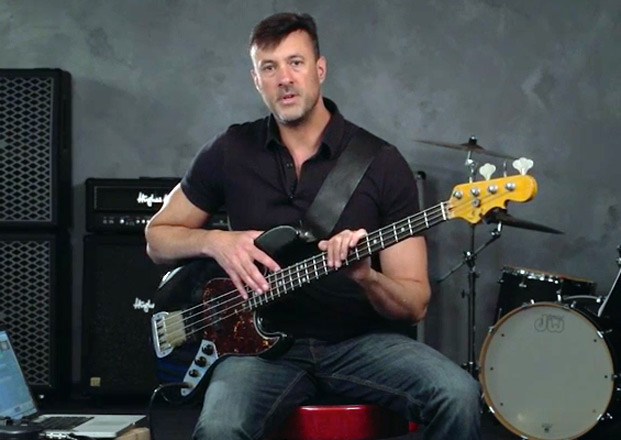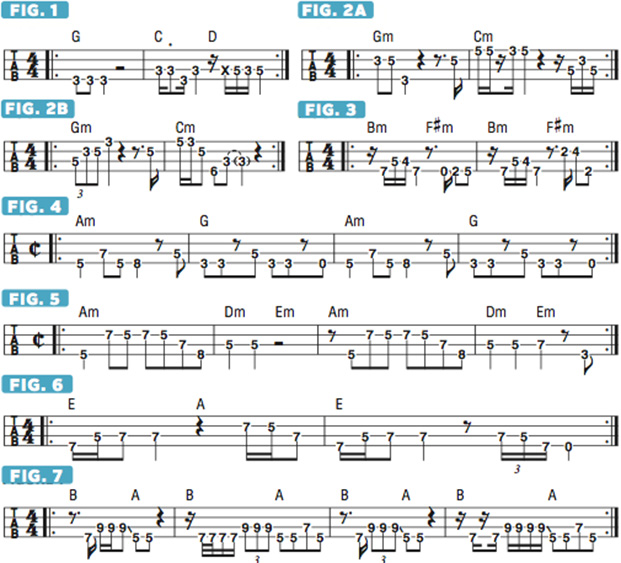A Crash Course in Reggae Bass
The basics of reggae bass playing.

I spend most of my gigging hours playing rock, funk or Top 40, which are mostly high-energy pursuits, so it’s refreshing when I get the opportunity to play chilled-out music outside those genres, such as reggae, where I can lay back, play very simply, and just vibe.
So in this month’s edition of Bass Camp, I thought it would be fun to cover the basics of reggae bass playing.
Let’s start with tone.
As reggae instrumentation is usually sparse—guitar and/or keyboard stabs on the upbeats, and maybe some organ pads (sustained chords), all over a moderate drum groove—you won’t need an aggressive tone to cut through layers of guitars.
In fact, the “deader” your strings are, the better. EQ-wise, you’ll want plenty of low end and just enough midrange to keep your notes defined without being too muddy. If your strings still have some brightness in them, you may opt to pick with your thumb, à la Sting, for an even duller tone.
The beauty of reggae bass is there’s plenty of sonic space in which to create. Rhythmically, reggae bass grooves can start right on the first beat—the “one”—or you can leave the “one” silent and start on an off-beat. Further, the key is to sit slightly behind the beat; precision isn’t always necessary, and it’s okay if some rhythms fall between the cracks. Harmonically, you can begin the groove with the root of whatever chord or key you’re in, or you can opt to start on another chord tone, such as a third or fifth. It really comes down to vibe, feel and taste.
Knowing that we don’t have to fill up all the space, let’s start with a basic, sparse, I-IV-V (one-four-five) groove to get our feet wet. In the first bar of FIGURE 1, the bass plays a few root notes to establish the foundation, and then rests for the remainder. In measure two, we introduce a little syncopation on the first beat, and leave the downbeat of beat three clear, playing the V chord on the upbeat instead.
FIGURE 2a is a similarly basic groove incorporating sparse rhythms and lots of space, but it starts on the dominant seventh instead of the root. We can vary this approach even further by starting on the fifth of the chord and altering the rhythms, as FIGURE 2b demonstrates. In FIGURE 3, we’ll experiment with starting the groove on the second 16th note of beat one.
Now that we’re familiar with the use of space in reggae grooves, let’s try getting a little busier. As you work through FIGURES 4 and 5, notice how the bass lines outline most of the indicated chords. For variety, try picking these lines with your thumb while lightly palm muting.
FIGURE 6 is a mixture of simple rhythms and space, with a 16th-note triplet thrown in near the end, and FIGURE 7 further explores the idea of starting the groove any place other than the “one,” with even more complex rhythms added in. As you can see, there are far more variations and possibilities than I can show you in the space allotted here.
In many ways, reggae frees you up to play loose or busy, depending on the vibe of the song, and gives you latitude to play around with different note orders (you don’t always have to start on the root) and rests, so you can slink around between the beats instead of right on top of them.

Get The Pick Newsletter
All the latest guitar news, interviews, lessons, reviews, deals and more, direct to your inbox!
“There are so many sounds to be discovered when you get away from using a pick”: Jared James Nichols shows you how to add “snap, crackle and pop” to your playing with banjo rolls and string snaps
Don't let chord inversions bamboozle you. It's simply the case of shuffling the notes around








![Joe Bonamassa [left] wears a deep blue suit and polka-dotted shirt and plays his green refin Strat; the late Irish blues legend Rory Gallagher [right] screams and inflicts some punishment on his heavily worn number one Stratocaster.](https://cdn.mos.cms.futurecdn.net/cw28h7UBcTVfTLs7p7eiLe.jpg)


